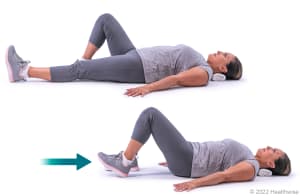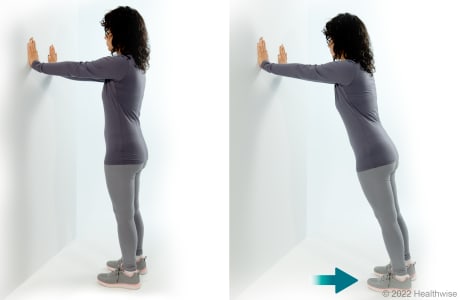Learning About Diastasis Recti Abdominus
What is it?
Diastasis recti abdominus (say "dy-AS-tuh-sus REK-ty ab-DOM-uh-nus") is a condition that happens when the two long muscles in the front of your belly (recti muscles) stretch and spread apart. Your belly may stick out in the gap between the muscles. This condition is different than a hernia.
Pregnancy is a common cause of this condition. As the uterus grows, it puts pressure on these belly muscles. This may cause the muscles to separate. It can show up in the weeks or months after childbirth. The muscles may heal on their own after pregnancy.
Being very overweight (obese) also may cause this condition. Stomach surgery sometimes causes it. Some babies are born with it, but the muscles often heal on their own.
What are the symptoms?
A bulge in the middle of your belly is the main symptom of this condition. You may only see the bulge when you tense your belly muscles. Belly pain may also be a symptom. Some people have no symptoms.
How is it treated?
In very rare cases that do not get better with physiotherapy, some people may have surgery to treat this condition. Here are the types of surgery:
- Open surgery. It uses one or more long cuts (incisions) in your belly.
- Laparoscopic surgery. It uses very small cuts in your belly. A doctor puts a lighted viewing tool and other surgical tools through the cuts.
- Robot-assisted surgery. It uses robotic arms and surgical tools. They are controlled by the doctor.
- A tummy tuck. It's also called an abdominoplasty. This is a type of open surgery. It tightens the belly muscles. And it removes excess fat and skin from your belly.
Your doctor will suggest physiotherapy as the first treatment. Or your doctor may give you some exercises to do. One exercise that may help is deep core muscles activation. Other exercises include pelvic tilt with heel slide and standing plank on a wall.
You may not need treatment if your symptoms don't bother you.
Deep core muscles activation

- Lie down, sit, or stand. Or try this exercise on your hands and knees.
- Pull in your belly. Imagine pulling your belly button back toward your spine.
- While you pull in your belly, squeeze your muscles as if you were trying not to pass gas.
- Hold for about 6 seconds, then release. Remember to keep breathing.
- Repeat 8 to 12 times.
Pelvic tilt with heel slide

- Lie on your back with your left knee straight. Your right knee should be bent.
- Tighten your belly muscles. Pull your belly button in toward your spine. You should feel your hips and pelvis rock back. Try to keep the muscles tight while you do the exercise.
- Bend your left knee by sliding your heel across the floor and toward your buttock.
- Repeat 8 to 12 times on each leg.
Standing plank on a wall

- Stand tall and face a wall.
- Place both hands on the wall with your palms flat. Your arms should be straight and at shoulder level.
- Pull in your belly. Imagine pulling your belly button back toward your spine.
- Step your feet back about 30 centimetres (12 inches) from the wall. Keep your body in a straight line and your shoulders relaxed.
- Hold for 3 to 5 seconds. Remember to keep breathing.
- Step forward to the starting position and take a deep breath.
- Repeat 8 to 12 times.
You can make this exercise harder by stepping back farther. Remember to step back just far enough to feel a gentle challenge in your belly muscles.
Adaptation Date: 09/14/2023
Adapted By: Alberta Health Services
Adaptation Reviewed By: Alberta Health Services
